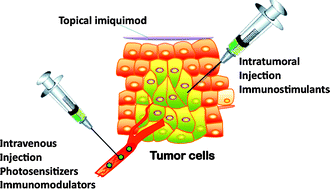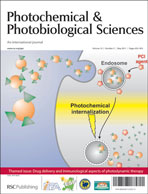Combination approaches to potentiate immune response after photodynamic therapy for cancer†
Abstract
Photodynamic therapy (PDT) has been used as a cancer therapy for forty years but has not advanced to a mainstream cancer treatment. Although it has been shown to be an efficient way to destroy local tumors by a combination of non-toxic

- This article is part of the themed collection: Drug delivery technologies and immunological aspects of photodynamic therapy

 Please wait while we load your content...
Please wait while we load your content...